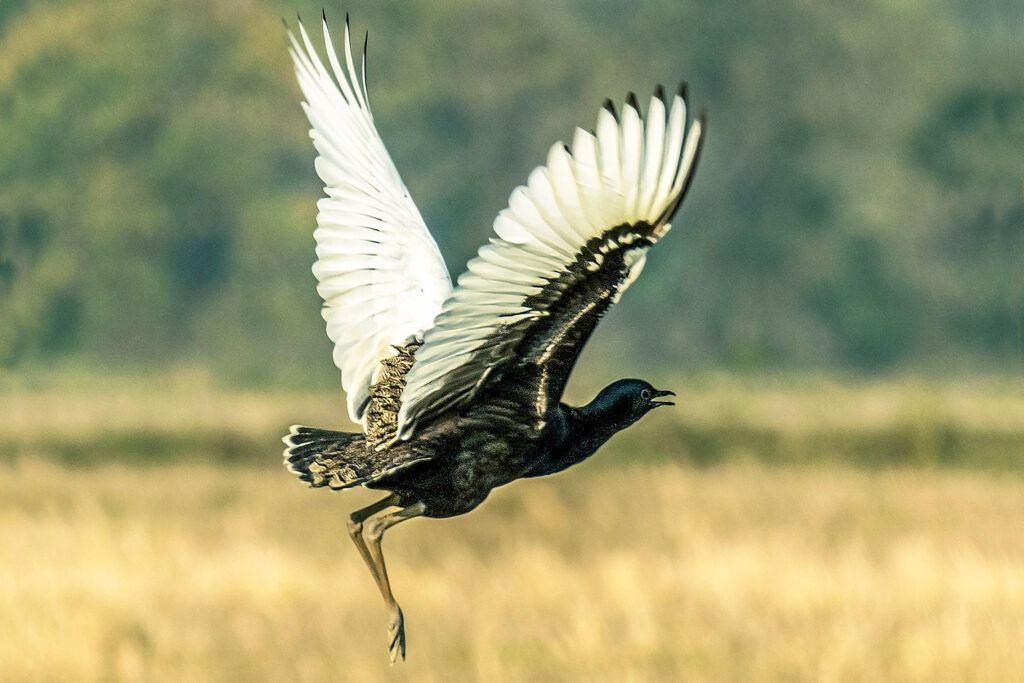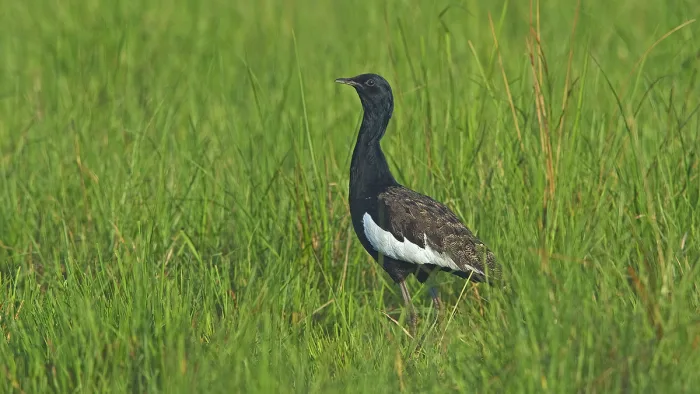Tall grass stretches as far as the eye can see, carefully swaying in the wind. The quiet rustle of the blades are brought to a crashing halt as the frantic flutter of wings echo across the plain. Out of the waist level grass a small, pigeon-like bird with a long neck jumps up, wings flapping loudly and slowly falls back into the grass. An outsider might have thought the bird injured, but in fact this is a unique facet of the Bengal Florican’s mating ritual. All species of florican aspire to attract mates by jumping 6-9 feet off the ground and striking a heroic pose. Unfortunately, their survival depends on the grasslands which are rapidly turning into agricultural land for the ever growing South Asian population.


There is only one population of fewer than 600 Bengal Floricans surviving in the wild today. Their rapidly declining population was a source of much worry for conservationists everywhere. However, as the possibility of extinction began to rise The Angkor Centre for Conservation of Biodiversity (ACCB) in Cambodia established a captive colony. The ACCB has been working tirelessly to help save many species and currently houses nearly 30 endangered species. Cambodia has been greatly struggling with rapidly declining biodiversity, with over 400 species listed as endangered and 56 as critically endangered.
Their new homes in captivity are specifically designed to mimic their natural habitat in order to allow the Bengal Floricans to learn the skills they would need to survive in the wild. The International Union for Conservation of Nature (IUCN) has reported the living conditions of the captive Bengal Floricans as “with limited to no human contact, safely cocooned in taller grass and soft ceilings that allow the males to practice their mating display.”
More than just establishing a captive colony, the ACCB educates the community about the plight of these fascinating ground-nesting birds. These ties with the locals aid the ACCB in protecting the Bengal Floricans in more ways than one. During the species’s breeding season, the ACCB is informed of any of their new nests in order to keep an eye on, protect, or move into the colony if necessary. Currently, there are fifteen of these birds in the colony, eleven moved into the colony after their eggs were found in the wild and four that were born in the wild and later moved into the colony.
In conclusion, the Bengal Florican species, with its unique mannerisms and rituals, is rapidly dying out due to hunting and habitat loss. Fortunately, because of the ACCB, all hope is not lost for the slowly regrowing species.

